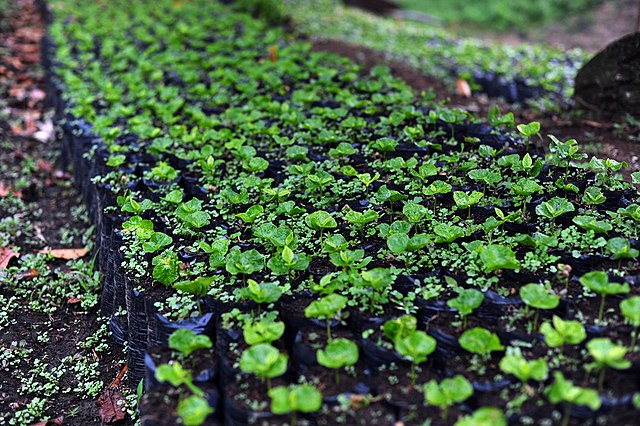The ‘1st International Agrienvironment Symposium’ (IAS2023) brings together from today in Salamanca researchers of excellence from various disciplines. This event, organized by the Unit of Excellence in Agricultural Production and Environment AGRIENVIRONMENT, of the University of Salamanca, is held at the Archbishop Fonseca College with the presence of more than 120 participants from institutions in seven countries. The meeting consists of six interdisciplinary sessions including 10 keynote lectures, 23 short talks and 52 poster communications. Over two days, they will showcase advances that are shaping the future of agriculture and the environment.
One of the featured speakers is Markus Stetter, a researcher at the University of Cologne (Germany), who studies plant domestication. “We analyze how they evolved from wild to cultivated. This transition is what we call domestication and we are trying to understand it, because it happened in just 10,000 years,” he explains in statements to DiCYT.
This basic research actually has very interesting practical applications
“If we understand what happened in the past, we can look for interesting genes in wild plants and cross them with other crops to change plants in the future,” Stetter stresses. This possibility makes it possible to imagine an agriculture that is more diverse and, above all, better adapted to the demands of climate change; for example, by developing new crops that withstand high temperatures well from wild plants.
From the point of view of evolution, it is a very short period of time, but some plants have changed a lot, for example, corn, which today is very different from what it was in its wild form thanks to the selection of varieties made by humans over time. However, other plants have not changed so much, for example, amaranth, another crop native to Latin America.
The interesting differences between corn and amaranth
Unlike corn, the seed of amaranth does not stay on the plant, but falls to the ground. “This difference is important, because we humans are interested in harvesting at once, but that is not ideal for wild species, which need the seed to fall to the ground to grow,” says the expert. Curiously, these two plants were cultivated by the same pre-Hispanic peoples, so “we are trying to understand why the same genetic change did not occur in amaranth as in maize“.
RNA as a tool
For his part, Alberto Carbonell, a researcher at the Institute of Molecular and Cellular Biology of Plants (IBMCP, a joint center of the CSIC and the Polytechnic University of Valencia) opened the symposium by explaining his genetic studies. “We try to design RNA molecules to treat plants and be able to regulate gene function,” a strategy that can induce resistance to pathogens such as viruses. First, they are tested in model plants such as Arabidopsis thaliana, but the Valencian scientists are transferring the advances to tomato because of its great importance for international agriculture. “There are a number of viruses that affect this crop and, using these molecules, we could make the tomato plants more resistant, saving a lot of crop area around the world,” he says.
In the search for an agriculture with a lower environmental impact, to apply this strategy, “we are trying to do our bit by developing more environmentally friendly treatments, obtained from plant extracts and that help to reduce the amount of pesticides,” adds Carbonell.
A meeting that puts Salamanca on the map
Eight other speakers will be featured in the rest of the main talks: Cláudia Vicente (University of Évora, Portugal); David Turrà (University of Naples Federico II, Italy); Elsa Brandão (University of Porto, Portugal); Francesco Asnicar (University of Trento, Italy) Letricia Barbosa (University of Santiago de Compostela, Spain); Lorena Gómez-Aparicio (IRNAS-CSIC, Spain); María Reguera Blázquez (Universidad Autónoma de Madrid, Spain); and Raquel Iglesias Fernández (Centro de Biotecnología y Genómica de Plantas, CBGP, UPM-INIA, Spain).
The Unit of Excellence in Agricultural Production and Environment AGRIENVIRONMENT is made up of six research groups from the University of Salamanca and is funded by the Junta de Castilla y León and the European Regional Development Fund. Already a reference for the primary sector, including companies and farmers, the Unit aspires to lead agri-food research in the community. In this context, this symposium contributes to its internationalization, generating new contacts and collaborations.
Source: noticiassalamanca.com
